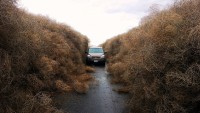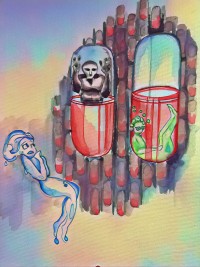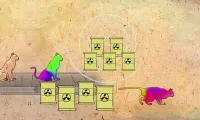All of the choices are in fact TRUE.
Hanford Facts That Are Hard To Believe

Blue Tumbleweeds: Back in the day, workers surveying Hanford’s vegetation would test plants for radioactivity and mark the radioactive specimens blue. These plants likely contained strontium-90, a cancer-causing radionuclide. This practice continued until blue tumbleweeds began rolling through Richland. After a while, word got out about the blue tumbleweeds and people grew alarmed. The U.S. Dept. of Energy had a simple fix for the radioactive tumbleweed problem: stop painting the tumbleweeds blue.

Unusual Event at the Waste Encapsulation and Storage Facility (WESF): According to a recent inspection report from the Defense Nuclear Facilities Safety Board, all of the workers in WESF were evacuated in February 2023 due to a fire. The fire was caused from multiple blown fuses in a heater control panel located in the HVAC room at WESF. WESF houses 1,936 cesium and strontium capsules that require storage in large basins of water to stay cool. If the basins were to fail, the facility could release catastrophic amounts of radioactivity into the environment. Events like this are a stark reminder of the dangers of aging facilities at the Hanford Nuclear Site and the pressing need to move these capsules into dry storage as quickly as worker safety allows.

Color-Changing Cats: Hanford contains some of the most long-lived radioactive pollution on the planet. How will the federal government keep people safe from pollution for thousands of years? One suggestion from Montreal based group, Bricobio, is Ray Cats, engineered cats that change color in response to radiation. Ray Cats may seem like a bad sci-fi movie, but the need to think today about Hanford’s long-lived contamination is essential. Today, we are seeing the federal government proposing clean up plans implying that someone will need to babysit waste for over 300 years. The Hanford Advisory Board has previously advised that expecting institutional controls, such as zoning restrictions, to be followed for more than 100-years is unreasonable in Hanford’s River Corridor.
This product is funded through a Public Participation Grant from the Washington State Department of Ecology. The content was reviewed for grant consistency but is not necessarily endorsed by the agency
Cleanup of Hanford’s River Corridor remains far from complete


